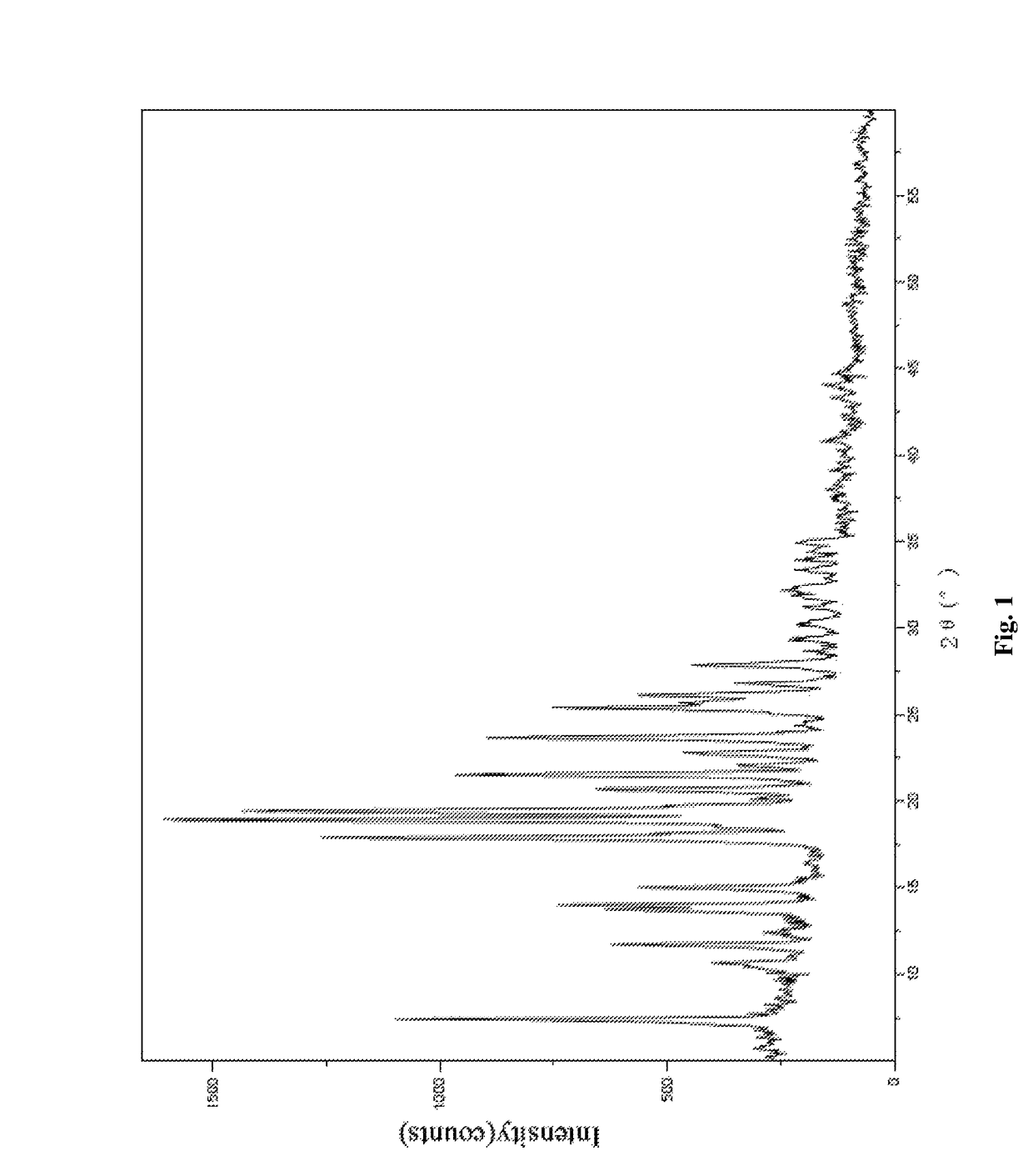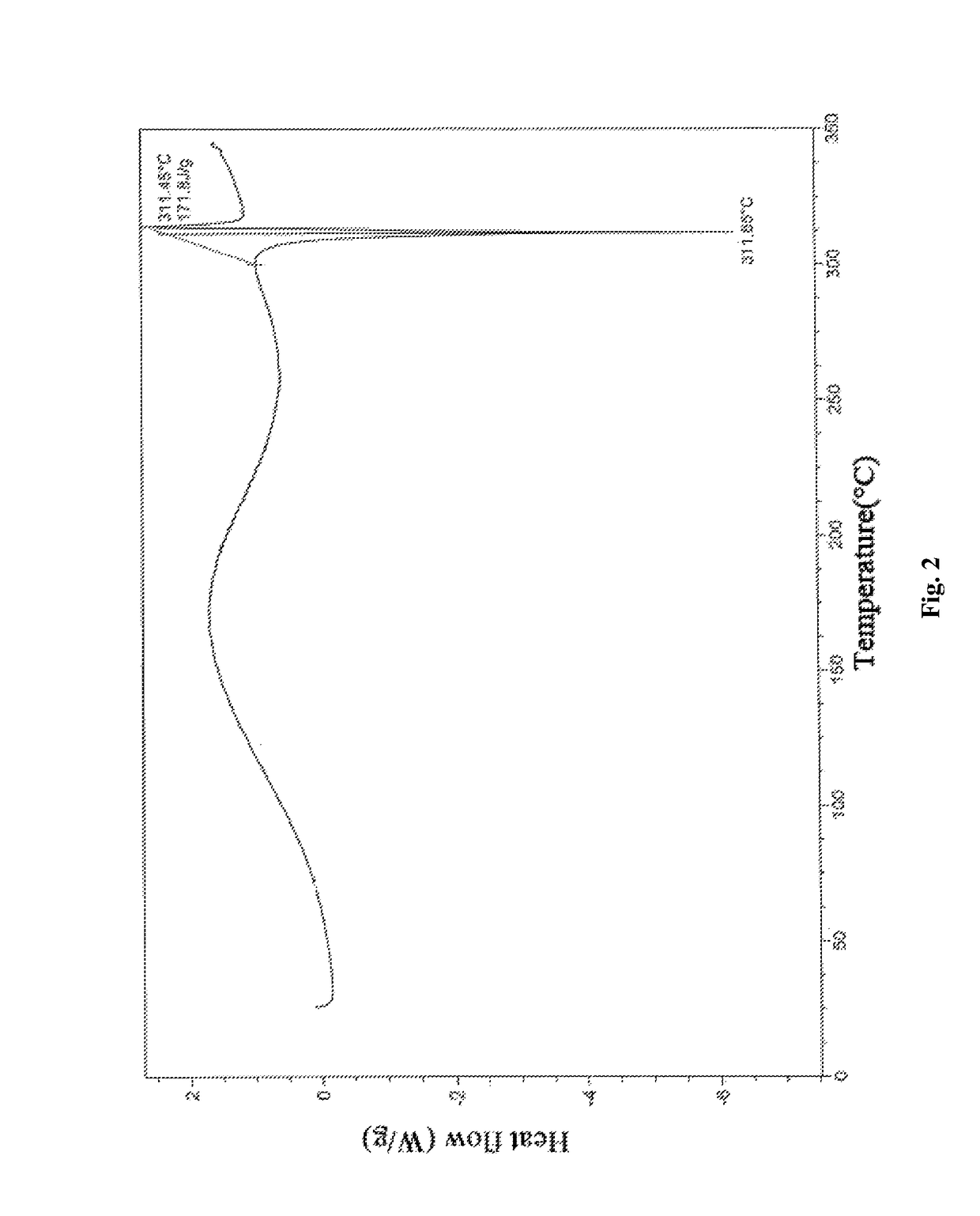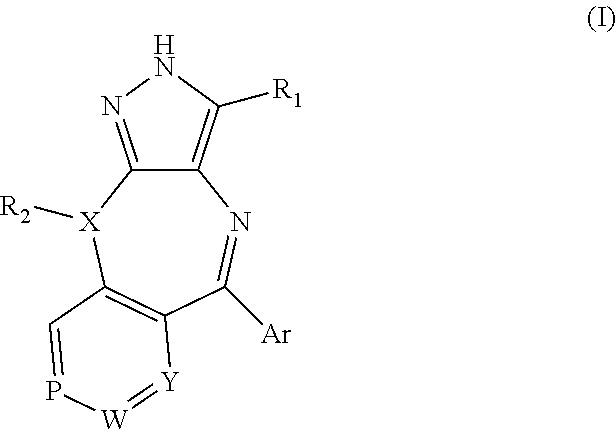Multi-kinase inhibitor compound, and crystal form and use thereof
a multi-kinase inhibitor and compound technology, applied in the field of medicine technology, can solve the problems of cell death, genetic instability, tumor formation,
- Summary
- Abstract
- Description
- Claims
- Application Information
AI Technical Summary
Benefits of technology
Problems solved by technology
Method used
Image
Examples
embodiments
[0084]The present invention will be further described in detail below with reference to the accompanying drawings, so as to illustrate the purposes, technical solutions and advantages of the present invention more clearly. It is apparent that the described embodiments are only a part of the embodiments of the invention, rather than all of them. All other embodiments obtained by those skilled in the art based on the embodiments of the present invention without creative efforts are within the scope of the present invention.
preparation example 1
mediate 1-(4-methoxybenzyl)-5-methyl-4-nitro-1H-pyrazol-3-amine
[0085]
Step 1: Synthesis of N-(5-methyl-1H-pyrazol-3-yl)acetamide
[0086]
[0087]5-methyl-1H-pyrazol-3-amine (300 g, 3.09 mol, 1.0 eq) was weighted into a 5 L round bottom flask, dissolved by adding water (2800 mL) with mechanical stirring at room temperature. Sodium bicarbonate (780 g, 9.28 mol, 3 eq) was added in portions, following by stirring for another 30 min after the addition. Then, acetic anhydride (592 ml, 6.2 mol, 2 eq) was added dropwise and slowly to the reaction system over about 1 h at controlled drop rate. At this point, a large amount of foamy white solid was produced. The temperature was raised to 100° C. and the reaction system was stirred for 2 h. The solid was gradually dissolved, and the system became clarification. Then heating was stopped, and the system was cooled to room temperature. After stirring overnight, a large amount of white crystalline solid precipitated. Another batch of 5-methyl-1H-pyrazol...
preparation example 2
mediate (6-bromo-4-iodo-pyridin-3-yl)(2-chlorophenyl)methanone
[0097]
Step 1: Synthesis of (6-bromopyridin-3-yl)(2-chlorophenyl)methanol
[0098]
[0099]Anhydrous tetrahydrofuran (500 mL) and 2,5-dibromopyridine (100.0 g, 0.42 mol, 1.0 eq) were added into a 2 L four-necked flask, and the mixture was cooled to 2° C. with stirring in the presence of an ice water bath. Isopropyl magnesium chloride (210.5 mL, 2.0 M, 0.42 mol, 1.0 eq) was then added dropwise over about 0.5 h at a controlled temperature of no more than 10° C. The reaction system was stirred at room temperature (20° C.) for 1 h, then cooled to 10° C. with an ice water bath. A solution of 2-chlorobenzaldehyde (62.3 g, 0.443 mol, 1.05 eq) in tetrahydrofuran (200 mL) was added dropwise over about 0.5 h. After stirring at 10° C. for 2 h, the reaction endpoint was monitored by TLC. Saturated aqueous solution of ammonium chloride (300 mL) was added into the reaction system. After stirring for 10 min, the organic phase was separated fro...
PUM
| Property | Measurement | Unit |
|---|---|---|
| volume | aaaaa | aaaaa |
| temperature | aaaaa | aaaaa |
| temperature | aaaaa | aaaaa |
Abstract
Description
Claims
Application Information
 Login to View More
Login to View More - R&D
- Intellectual Property
- Life Sciences
- Materials
- Tech Scout
- Unparalleled Data Quality
- Higher Quality Content
- 60% Fewer Hallucinations
Browse by: Latest US Patents, China's latest patents, Technical Efficacy Thesaurus, Application Domain, Technology Topic, Popular Technical Reports.
© 2025 PatSnap. All rights reserved.Legal|Privacy policy|Modern Slavery Act Transparency Statement|Sitemap|About US| Contact US: help@patsnap.com



